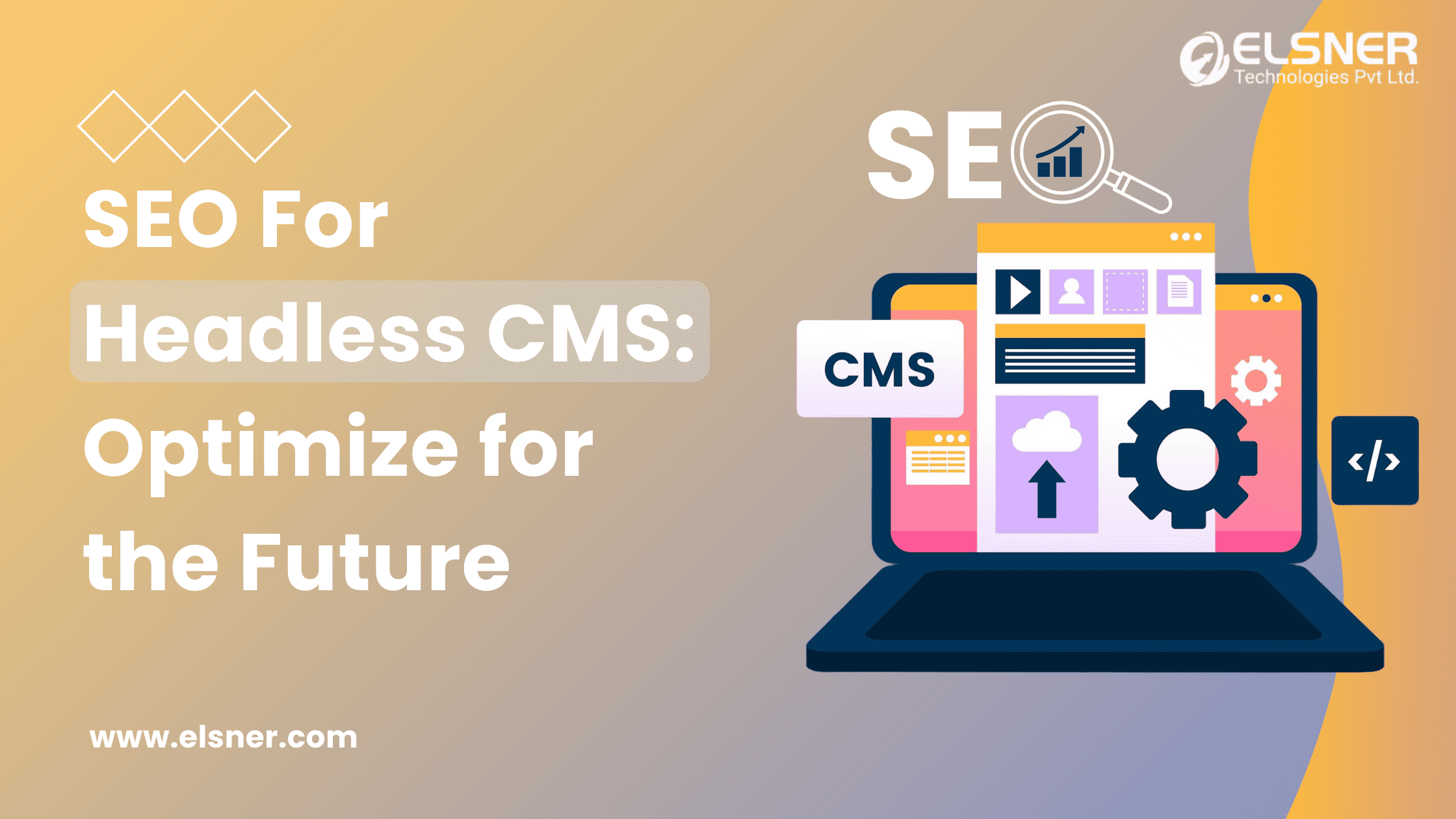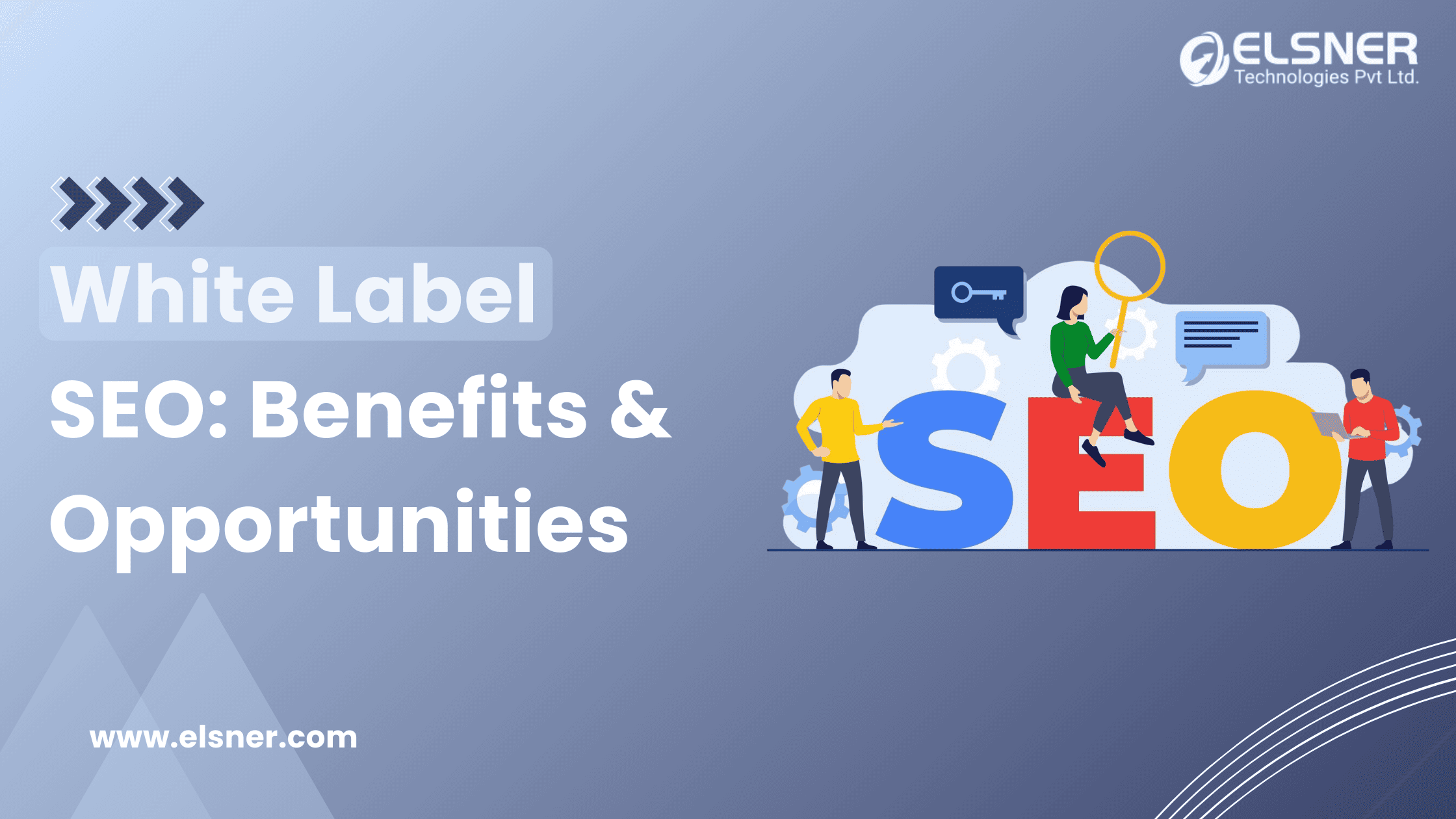- Why is SEO Migration Crucial?
- The Importance of Maintaining SEO During Website Migration or Focusing on Site Migration SEO
- Common Risks of Poor Site Migration SEO
- Benefits of a Successful Migration with Proper SEO Practices
- Types of SEO Site Migrations
- CMS Migration SEO
- Domain Migration SEO
- Site Migration SEO
- SEO Migration Checklist: Your Roadmap to Success
- Step 1: Conducting a Thorough Site Audit
- Step 2: Mapping URLs for Seamless Redirection
- Step 3: Planning and Testing Redirects
- Step 4: Preserving Meta Tags, Image Alt Texts, and Internal Links
- Bonus Tips: Leveraging Tools for Success
- SEO Migration Strategy
- Importance of a Well-structured Migration Strategy
- Pre-Migration Planning and Real-Time Monitoring During Migration
- Post-Migration Optimization and Performance Tracking
- “Turn Your Website into a Search Engine Magnet”
- Custom CMS SEO Migration
- Handling Unique Challenges in Custom CMS SEO Migration
- Tailored Solutions for a Smooth Transition
- Why Professional Help Matters?
- Benefits of Professional SEO Services for Migration
- Comprehensive Audits and Tailored SEO Solutions
- Ongoing Support and Monitoring
- Transparent Reporting with Metrics
- Post-Migration SEO Monitoring
- Tools and Techniques for Tracking SEO Progress
- Handling Issues Post-Migration
- Final Thoughts
- FAQs
Have you ever heard the phrase, “Do not fix what is not broken”? While that may work for many things, change is inevitable regarding websites. Whether rebranding, upgrading your CMS, or redesigning your site, SEO migration services play a critical role in ensuring a smooth transition. But here is the catch—migrating a website without safeguarding its SEO can be like tearing down a house and forgetting to rebuild the foundation. The stakes are high: ranking drops, traffic declines, and shattered user experiences.
Consider this: according to a study by HubSpot, 75% of users never scroll past the first page of search results. One mistake in your SEO site migration or website migration SEO can push your website into digital oblivion. Partnering with an experienced SEO services company can make all the difference by ensuring your migration process is handled with precision and expertise. Let us explore how SEO migration can be your ultimate savior, ensuring your site transition is smooth, secure, and successful.
Why is SEO Migration Crucial?
Website migration SEO is like moving houses. Without careful planning, you might lose valuables – in this case, your hard-earned SEO rankings. Let us explore why maintaining SEO during migration is essential for your site’s success.
The Importance of Maintaining SEO During Website Migration or Focusing on Site Migration SEO
When you migrate a website, you are essentially overhauling its foundation. Whether it is a CMS upgrade or a domain change, your site’s SEO groundwork is at risk of being disrupted. Search engines rely on consistency. Abrupt changes can confuse them, leading to significant ranking losses.
Think about WordPress SEO optimization. Migrating a WordPress site requires maintaining your optimized URL structures, metadata, and internal links. Failing to do so can undo months or even years of SEO efforts. Here’s why SEO for WordPress is vital during migration:
- It ensures search engines understand and index your new structure.
- Helps preserve your site’s visibility and authority.
- Ensures your audience can find your content seamlessly.
Professional SEO services can guide this process to ensure you do not miss a step. When working with a reputed agency offering related services, they will offer you the best aid in terms of SEO.
Common Risks of Poor Site Migration SEO
A poorly executed migration can have lasting consequences. Let us look at the common pitfalls:
|
Risk |
Impact |
|
Ranking Loss |
Sudden drops in search engine rankings can take months to recover. |
|
Traffic Decline |
Fewer visitors mean lower engagement, sales, and conversions. |
|
Broken Links |
Missing or misdirected links lead to 404 errors, harming user experience. |
Take an example of WordPress SEO techniques. If you do not implement 301 redirects correctly during migration, your site’s link equity is lost. This can significantly impact your domain authority. Affordable SEO services often include tools to monitor such risks and address them proactively.
Other issues like duplicate content and crawl errors may arise if technical SEO elements are overlooked. To mitigate these risks, hire experts who specialize in SEO migration.
Benefits of a Successful Migration with Proper SEO Practices
Now, let us flip the narrative. A well-planned migration can do wonders for your website. Here are the key benefits:
- Preserved Rankings and Traffic: Proper planning ensures your site maintains its ranking positions, safeguarding your organic traffic.
- Improved User Experience: A seamless transition guarantees that users can navigate the new site effortlessly. This is especially important for WordPress E-commerce development sites.
- Optimization Opportunities: Migrations provide a chance to fix outdated content, improve page load speeds, and adopt the latest WordPress SEO strategies.
- Enhanced Brand Perception: A professionally migrated website boosts trust and confidence among your audience.
For businesses using WordPress for blogging or e-commerce, these benefits are invaluable. Not only do they sustain your online presence, but they also create growth opportunities. Investing in professional SEO services ensures that every aspect of your migration aligns with your goals.
By prioritizing site migration SEO, you safeguard your online reputation and set the stage for future success. Whether you choose to hire a WordPress developer or engage a WordPress development company, always ensure that your migration is backed by proven WordPress SEO tips and strategies.
Types of SEO Site Migrations
 SEO site migrations can take several forms, each requiring specific strategies to safeguard SEO. Let’s explore these types in detail.
SEO site migrations can take several forms, each requiring specific strategies to safeguard SEO. Let’s explore these types in detail.
CMS Migration SEO
Changing your Content Management System (CMS) or CMS migration SEO involves moving from one platform to another. This could mean transitioning from WordPress to BigCommerce or Magento to Shopify. Such migrations are often necessary for better functionality, improved user experience, or business scaling.
|
Key Considerations |
Details |
|
Maintaining URL Structure |
Ensure all URLs remain consistent or are properly redirected to avoid broken links. |
|
Preserving Meta Tags |
Titles and descriptions optimized for SEO must carry over to the new platform. |
|
Internal Link Integrity |
Internal links must point to the correct pages on the new site. |
For businesses utilizing WordPress SEO optimization, these steps are critical. Custom WordPress development services often include SEO strategies tailored for seamless CMS transitions. Hiring a WordPress expert ensures nothing is overlooked.
Domain Migration SEO
Domain migration SEO typically occurs during the rebranding or merging of websites. This process involves transferring your site’s content to a new domain without losing its SEO equity. It’s a delicate task that requires:
|
Steps for Domain Migration SEO |
Why It Matters |
|
Implementing 301 Redirects |
Redirect old URLs to their corresponding new URLs to preserve link equity. |
|
Updating Backlinks |
Notify partners and stakeholders to update backlinks pointing to your site. |
|
Re-submitting to Search Engines |
Use tools like Google Search Console to inform search engines of the domain change. |
With WordPress SEO strategies, you can maintain your site’s authority even during domain changes. Affordable SEO services help ensure a smooth transition while mitigating the risks of ranking losses.
Site Migration SEO
A complete website redesign often includes structural changes, content updates, and aesthetic improvements. This type of migration demands meticulous SEO planning. Key focus areas include:
|
Aspect |
Action |
|
Proper URL Structure |
Avoid altering URLs unnecessarily. If changes are made, 301 redirects are a must. |
|
Canonical Tags |
Ensure canonical tags point to the preferred versions of your pages. |
|
Content Preservation |
Retain high-performing content and optimize it further if needed. |
For WordPress Ecommerce development, such migrations provide an opportunity to enhance functionality while keeping SEO intact. Collaborate with a WordPress development company to align redesign efforts with your SEO goals.
By understanding the types of SEO migrations and their challenges, you can make informed decisions for your site. Whether you focus on WordPress for blogging, e-commerce, or corporate websites, the right WordPress SEO guide will ensure your migration is a success.
SEO Migration Checklist: Your Roadmap to Success
Migrating a website is a journey that requires careful planning and execution. Think of it as navigating through a dense forest—you need a detailed map to ensure you do not get lost. Let us break down each step in the SEO migration checklist to make your migration as smooth as possible.
Step 1: Conducting a Thorough Site Audit
A site audit is your starting point. Without understanding the strengths and weaknesses of your current site, you risk leaving behind crucial elements that contribute to your rankings.
- What to Audit: Traffic stats, high-performing keywords, backlinks, and SEO for WordPress elements like URL structures and meta tags.
- How It Helps: Identifies pages that drive the most value and highlights any existing issues.
For instance, if your site uses WordPress for blogging, focus on articles with strong organic traffic. Migrating these successfully ensures you retain your visibility.
|
Site Audit Focus |
Purpose |
|
High-Performing Pages |
Ensures these pages are prioritized during migration to avoid traffic losses. |
|
Backlinks |
Preserves link equity by redirecting valuable backlinks to the new site. |
|
Technical Issues |
Fixes issues like slow load times or crawl errors before conducting SEO site migration. |
Step 2: Mapping URLs for Seamless Redirection
URL mapping is the backbone of any successful migration. Imagine a highway with no signs—you would end up lost. Similarly, your audience and search engines need proper guidance.
Steps for Effective URL Mapping:
- List all current URLs.
- Match each URL to its new destination.
- Use 301 redirects to inform search engines about the changes.
Why This Matters:
Let us say you are transitioning to WordPress E-commerce development. Without URL mapping, you risk creating 404 errors, which frustrate users and harm your SEO. WordPress SEO strategies, like maintaining URL slugs, play a critical role here.
Step 3: Planning and Testing Redirects
Redirects are like bridges connecting the old and new. However, building these bridges incorrectly can disrupt the flow of traffic.
- 301 Redirects: These permanent redirects transfer link equity, ensuring your rankings remain intact.
- Testing Before Launch: Use tools like Screaming Frog to test redirects and identify errors before the new site goes live.
|
Redirect Planning Steps |
What to Ensure |
|
Create a Redirect Map |
Ensures all old URLs lead to relevant new ones. |
|
Test Redirects |
Checks for any broken or misdirected links that could harm user experience. |
|
Monitor Post-Launch |
Identifies issues missed during the initial testing phase. |
Redirects are especially critical for CMS migration SEO, where the platform itself might alter URL structures. Custom WordPress development services can assist in setting up these redirects efficiently.
Step 4: Preserving Meta Tags, Image Alt Texts, and Internal Links
Meta tags, image alt texts, and internal links are the unsung heroes of SEO. They silently work behind the scenes to enhance visibility and usability.
Meta Tags:
- Titles and descriptions optimized with WordPress SEO tips should be transferred to the new site. This ensures your pages remain keyword-rich and relevant.
Image Alt Texts:
- Alt texts improve accessibility and help search engines understand your images. During migration, ensure all alt texts remain intact.
Internal Links:
- Internal links guide users through your content and establish site hierarchy. Update these links to reflect the new site structure.
|
SEO Element |
Action Needed |
|
Meta Tags |
Transfer and update as needed for relevance and consistency. |
| Image Alt Texts | Retain descriptions to maintain SEO and accessibility. |
| Internal Links | Update to match the new URL structure without losing the original linking strategy. |
For businesses leveraging WordPress SEO optimization, preserving these elements ensures a seamless transition.
Bonus Tips: Leveraging Tools for Success
- Google Analytics: Tracks traffic drops and identifies redirect issues post-migration.
- SEMrush: Provides keyword performance insights and highlights lost backlinks.
- Screaming Frog: Detects crawl errors and helps with site audits.
These tools, combined with professional SEO marketing services, create a solid foundation for migration success.
By following this SEO migration checklist and implementing these SEO migration strategies and steps, you ensure that your migration not only preserves your SEO efforts but also sets the stage for future growth. Whether you decide to hire WordPress developers or work with a WordPress development company, staying vigilant during migration guarantees a seamless transition. You should always ensure that your SEO migration strategy is comprehensive and well-executed.
SEO Migration Strategy
A successful SEO migration strategy is your blueprint for retaining online visibility during a website transition. Whether it’s CMS migration SEO, domain migration SEO, or a full-scale redesign, a structured approach ensures minimal disruption to your rankings and traffic. Let’s explore the critical components of an effective SEO migration strategy.
Importance of a Well-structured Migration Strategy
A well-structured SEO migration strategy acts as your guiding star during complex transitions. Migrating a website without a plan is like embarking on a cross-country road trip without a map—you’re bound to get lost. Here’s why structure is essential:
- SEO Preservation: Search engines like consistency. A structured strategy ensures they understand your new site layout, minimizing ranking fluctuations.
- Traffic Retention: Clear redirection paths preserve link equity and ensure users find what they’re looking for.
- Seamless User Experience: A well-planned migration minimizes errors, like broken links or missing content, which can frustrate users.
For instance, in CMS migration SEO, maintaining URL structures and meta tags is vital to avoid losing the SEO foundation built over time. A structured strategy is particularly beneficial when working with a professional SEO company or leveraging affordable SEO services.
Pre-Migration Planning and Real-Time Monitoring During Migration
Pre-Migration Planning: The Foundation for Success
Pre-migration planning is akin to packing for a big move—you must sort, organize, and plan to avoid leaving anything behind. Here’s how you can lay a solid foundation:
- Conduct a Comprehensive Audit:
-
-
- Analyze your current site for high-performing pages, backlinks, and technical SEO elements.
- Use tools like Screaming Frog or SEMrush to identify and fix any existing issues before the migration begins.
-
- Develop a Detailed SEO Migration Checklist:
-
-
- List all essential steps, from URL mapping to testing redirects.
- Include a plan for preserving meta tags, image alt texts, and internal links.
-
- Collaborate with Experts:
-
- Engage custom CMS SEO migration services or an SEO services company. Professionals ensure nothing is overlooked during planning.
Real-Time Monitoring During Migration: Staying Ahead of Issues
Migration day is like game day—everything needs to go smoothly. Real-time monitoring ensures you catch and fix issues as they arise. Key steps include:
- Redirect Testing: Use tools to verify that 301 redirects work correctly. Broken or misdirected links can harm both user experience and SEO.
- Server Monitoring: Ensure your server can handle the transition without downtime, especially for high-traffic websites.
For example, in domain migration SEO, monitoring ensures that old URLs redirect seamlessly to new ones, preserving your site’s authority and traffic.
Post-Migration Optimization and Performance Tracking
Once the migration is complete, the real work begins. Post-migration optimization ensures your site remains competitive and continues to rank well. Let’s break this phase into actionable steps:
- Verify and Optimize:
-
-
- Check all redirects, meta tags, and internal links to ensure they function as planned.
- Use Google Search Console to identify crawl errors or indexing issues.
-
- Track Performance Metrics:
-
-
- Monitor rankings, organic traffic, and user behavior. Tools like Google Analytics provide valuable insights into how your audience is interacting with the new site.
- Compare post-migration metrics to pre-migration benchmarks to assess success.
-
- Enhance for Growth:
-
- Leverage the migration as an opportunity to implement the latest SEO strategies, like improving page load speeds or optimizing for mobile-first indexing .\Professional SEO companies often include post-migration services in their affordable SEO packages or SEO services packages, ensuring your website performs optimally after the transition.
-
Why Does a Structured Approach Matters?
A structured SEO migration strategy is more than just a safety net; it’s a growth opportunity. By following a comprehensive plan, you not only protect your existing rankings but also position your website for future success. Whether you’re handling CMS migration SEO, domain migration SEO, or website migration SEO, remember that meticulous planning, real-time monitoring, and post-migration optimization are the cornerstones of a seamless transition.
“Turn Your Website into a Search Engine Magnet”
Maximize your website’s potential with professional SEO services designed to deliver results.
Custom CMS SEO Migration
When it comes to custom CMS platforms, SEO migration requires extra care. Each platform has its quirks, and addressing these challenges head-on is crucial for success.
Handling Unique Challenges in Custom CMS SEO Migration
Custom CMS platforms often come with non-standard URL structures and complex code setups. Without proper planning, these can disrupt your site migration SEO efforts. Here is how to tackle these challenges effectively:
- Analyze Current URLs: Map out all URLs to ensure no valuable link equity is lost.
- Optimize Metadata: Recreate and enhance meta titles, descriptions, and tags to maintain SEO performance.
- Redirect Planning: Set up precise 301 redirects to guide users and search engines to the new pages.
Tailored Solutions for a Smooth Transition
A well-planned SEO migration strategy is essential for custom CMS platforms. Here is what works:
- Custom URL Mapping: Adapt the URL structure to ensure alignment with SEO best practices.
- Content Migration: Transfer content seamlessly to prevent duplication or loss.
- Testing and Validation: Use tools to test redirects and ensure the site is crawlable post-migration.
|
Task |
Action |
Benefit |
|
URL Mapping |
Create a detailed mapping document |
Prevents broken links and ranking loss |
|
Metadata Optimization |
Update titles and descriptions |
Boosts click-through rates |
|
Redirect Implementation |
Apply 301 redirects site-wide | Retains link equity and user experience |
By implementing these strategies, your custom CMS SEO migration can be smooth and effective.
Why Professional Help Matters?
Collaborating with a professional SEO company ensures a seamless transition. Experts offer tailored SEO migration services, including affordable SEO packages or SEO services packages that fit your needs. With transparent reporting and ongoing support, you can trust the process to yield results.
For businesses aiming to protect their rankings, SEO migration services are a must. Custom CMS SEO migration, though complex, is manageable with the right strategy and support.
Benefits of Professional SEO Services for Migration
A successful SEO migration demands expertise and precision. Professional SEO services provide invaluable support to ensure a smooth transition.
Comprehensive Audits and Tailored SEO Solutions
Every site migration SEO project starts with a detailed audit. Professionals evaluate current rankings, URL structures, and metadata to identify areas needing attention. This ensures your SEO migration checklist is thorough and aligned with your website’s needs. Tailored SEO site migration strategies are then implemented to safeguard your rankings.
Ongoing Support and Monitoring
SEO does not end when migration is complete. Experts continuously monitor the performance of your new site. This involves tracking metrics, fixing crawl errors, and optimizing content as needed. With professional support, you can be confident that your website migration SEO will stay on track.
Transparent Reporting with Metrics
Regular reports ensure you know the impact of the migration. Metrics like organic traffic, keyword rankings, and bounce rates are monitored. This transparency allows you to measure the effectiveness of your domain migration SEO efforts and make data-driven decisions.
|
Service |
Benefit |
|
Comprehensive Audits |
Identifies potential issues before migration |
| Continuous Monitoring | Ensures consistent performance post-migration |
|
Transparent Reporting |
Provides clear metrics for tracking success |
Collaborating with a professional SEO company ensures that no detail is overlooked. Their expertise in SEO migration services or SEO marketing services, coupled with affordable SEO packages, guarantees a hassle-free experience. Whether it is CMS migration SEO or domain migration SEO, the right team can make all the difference.
Post-Migration SEO Monitoring
The work does not stop once your website goes live. Post-migration SEO monitoring ensures your efforts yield results without unexpected hiccups.
Tools and Techniques for Tracking SEO Progress
Effective tracking tools are critical for monitoring SEO migration. Here is how to keep things on track:
- Google Search Console: Identify crawl errors, indexing issues, and performance metrics. This tool is essential for any website migration SEO project.
- Analytics Tools: Track organic traffic, bounce rates, and conversions to measure success.
- Site Auditing Tools: Tools like Screaming Frog or SEMrush help spot broken links and metadata issues.
These tools ensure you catch potential problems early and keep your site migration SEO on track.
Handling Issues Post-Migration
Addressing challenges immediately after migration is vital for maintaining rankings and traffic. Common issues include:
- Crawl Errors: Use Google Search Console to locate and fix errors quickly.
- Duplicate Content: Verify content consistency and fix duplications to avoid penalties.
- Ranking Performance: Monitor key keywords to evaluate progress.
|
Issue |
Action |
Result |
|
Crawl Errors |
Fix with accurate 301 redirects |
Improves user and bot navigation |
|
Duplicate Content |
Consolidate with canonical tags |
Prevents ranking dilution |
|
Ranking Fluctuations |
Optimize pages with low performance |
Stabilizes search engine rankings |
By proactively addressing these, you ensure your SEO migration strategy delivers maximum results. Post-migration monitoring, coupled with affordable SEO services, sets your site up for ongoing success.
Final Thoughts
Migrating your website is not just a technical task—it is a strategic move. SEO migration is your shield against ranking losses and the key to maximizing success. By planning meticulously, leveraging the right SEO migration strategy, and involving professionals, you can turn this challenge into an opportunity.
So, why leave it to chance? Elsner’s includes the best SEO migration services in their digital marketing packages that equip you with everything you need for a seamless transition. Let us help you preserve your hard-earned rankings and take your website to the next level.
FAQs
- Why is SEO migration important for websites?
SEO migration ensures your site retains its rankings and traffic during major changes, like domain switches or redesigns.
- What are the common risks of poor SEO migration?
Ranking losses, traffic declines, and broken links are the most significant risks.
- How can a successful SEO migration benefit a website?
It preserves traffic, enhances user experience, and boosts brand visibility.
- What are the differences between CMS migration and domain migration?
CMS migration involves changing the platform, while domain migration entails switching your website’s address.
- What steps should be taken to ensure proper SEO during a website migration?
Audit your site, map URLs, plan redirects, and monitor performance post-migration.
- How does a custom CMS SEO migration handle unique challenges?
By tailoring solutions to the specific needs of the custom CMS, ensuring a smooth transition.
- Why should businesses consider professional SEO services for migration?
Professional services included in the best digital marketing packages usually offer expertise, tools, and strategies to minimize risks and maximize success.

About Author
Harshal Shah - Founder & CEO of Elsner Technologies
Harshal is an accomplished leader with a vision for shaping the future of technology. His passion for innovation and commitment to delivering cutting-edge solutions has driven him to spearhead successful ventures. With a strong focus on growth and customer-centric strategies, Harshal continues to inspire and lead teams to achieve remarkable results.




